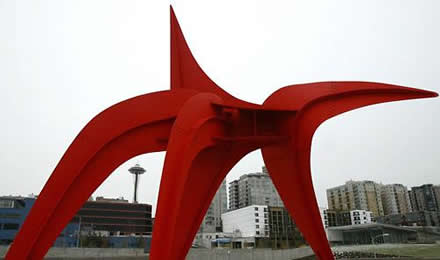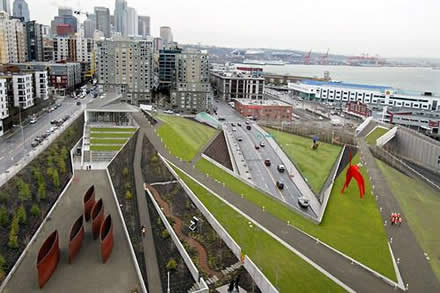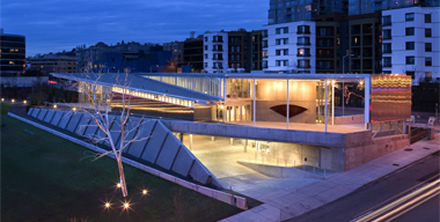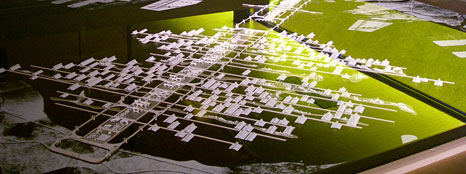
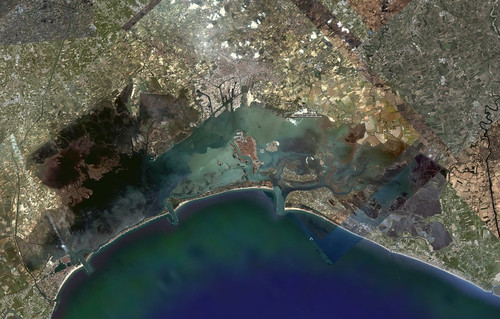
I recently discovered a great review of the 2005 Rotterdam Architecture Biennale over at Core 77, which highlights the progressive way in which Dutch architecture, landscape designs and urbanism, is tackling issues of rising sea levels and flood defences.
Under the theme of The Flood, and curated by landscape architect Adrisan Geuze of West8, the biennale was structured to give an overview of how water has historically influenced the Netherlands's architectural and civil engineering traditions, and compared these initiatives with others from around the world.
One of the most intriguing parts of the exhibition was Three Bays, with work by Hidenobu Jinnai (Tokyo University), Marino Folin (University of Venice) and Maarten Kloos (Arcam) comparing Tokyo, Amsterdam and Venice as three cities built by water during a similar period.
As a detailed review of the Venetian portion of the exhibition expresses:
javascript:void(0)
"Reclamation technics, settlement rules and urban foundation dynamics are very similar, sometimes completely alike. Observation of the three cities and their territory shows, between other things, that reclamation through building of coves and sandbanks (the famous Dutch polders) is not an exclusive of the Dutch tradition, as it has often been theorized right in Holland, on the contrary it is common to the three lagoon environments, where it takes, since remote times, surprisingly similar shapes and technologies."
The great stuff coming out of the NAI and the Architecture Biennale only convinces me further that Rotterdam's secret history is as an experimental urban laboratory.









